The best online photo editors 2022: edit photos in your web browser
Feature-packed online photo editors to perfect your pictures
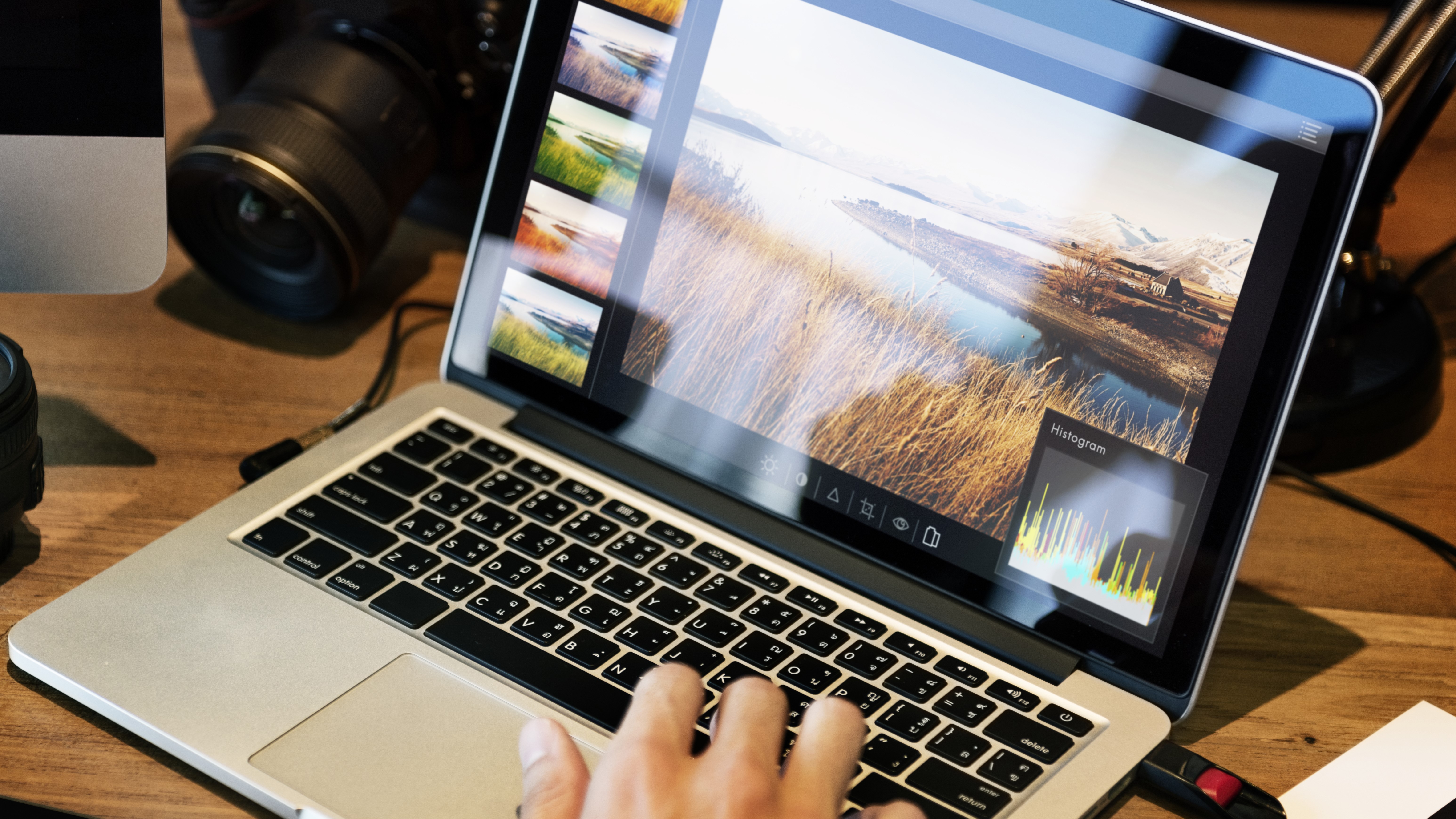
With the best online photo editor, you can fine-tune your photos any time and anywhere, without the need to spend time downloading dedicated software. All the tools you need are right there in your browser.
Web-based apps are more powerful than ever, and you'll find online versions of just about every type of software imaginable. Things have come on in leaps and bounds in a relatively short space of time, and this means that opting for an app that runs in your browser doesn't mean making compromises
You might think that the best photo editors are a little too high end to be replaced with web-based tools, but the range of online photo editors is not only wide but also packed with quality options. You will find basic tools for quick, simple editing if that's what you're looking for, buy you will also find that there are advanced tools that can even rival the likes of Photoshop.
There are lots of advantages to using an online image editor rather than a traditional installable. Not only does it mean that you can carry on with your editing from any computer with an internet connection, but also that you be sure that you are always using the very latest version of an editor. Software may be updated frequently, but online tools have their updates – including new features – rolled out much faster.
Here we take a look at five of the best online photo editors. All of them are free of charge, although some offers additional features for a fee. Whether you're looking for a simple tool for quick, simple image tweaks, or you need a fully-fledged editor, we have you covered.
- We've tested and ranked the best cheap cameras you can buy today
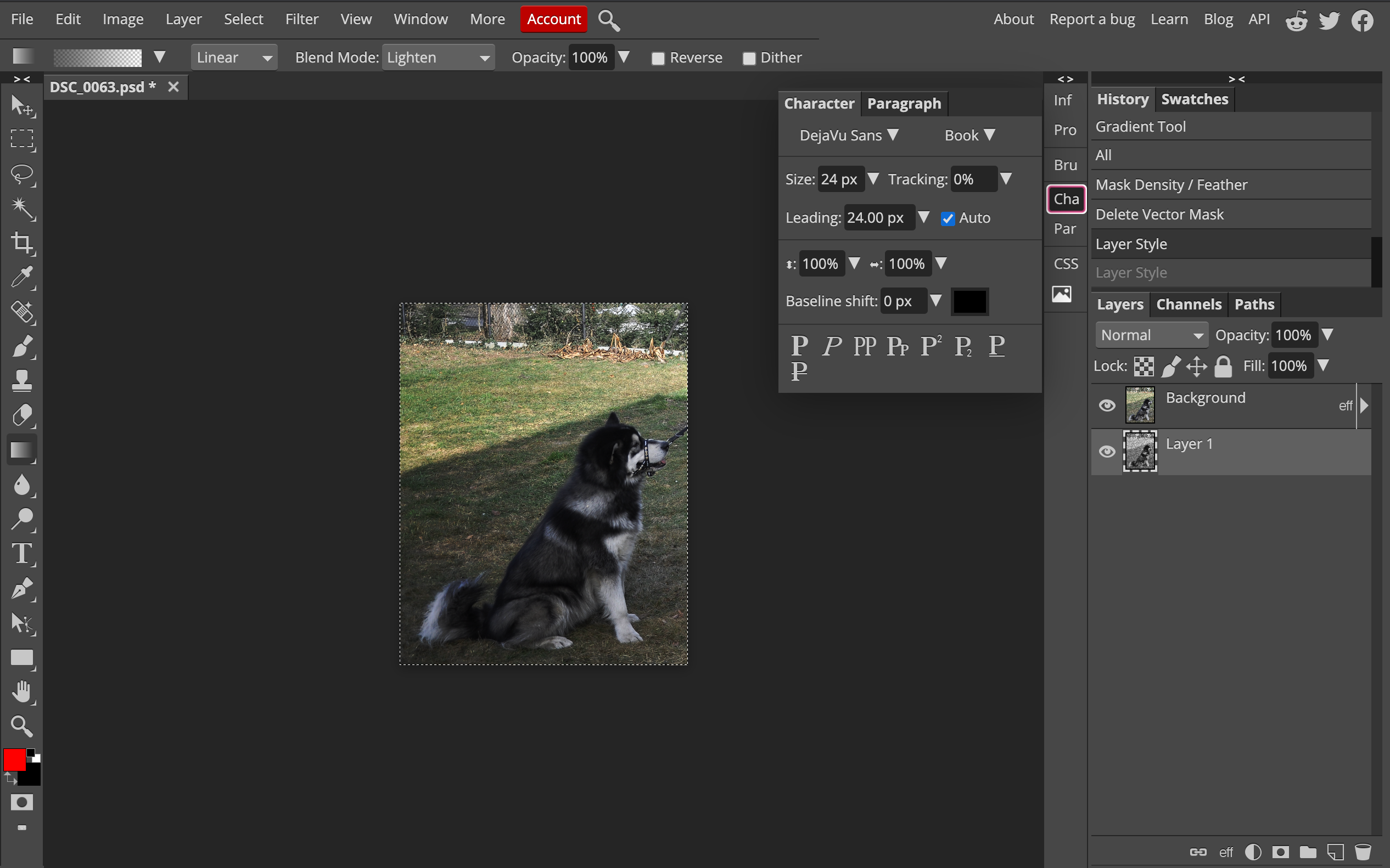
1. Photopea
Why you can trust TechRadar
If you're worried that online photo editors won't have enough features, Photopea will put your mind at least. This is virtually indistinguishable from a regular desktop app, and it is a hugely impressive photo editor.
In terms of look and feel, Photopea sits roughly hallway between Photoshop and GIMP, and the range, depth and power of the tools and features it offers is simply staggering. To appeal to advanced users, there is support for Photoshop's native file format as full support for layers, allowing for greater levels of creativity. Image can be uploaded from your computer, or you can work with online images by providing the relevant URL. When it comes to saving files, you have no fewer than 15 popular file formats to export to.
With a selection of powerful filters, a range of selection and masking tools, multi-levels undo, and even the Photoshop-aping Spot Healing Brush, you'd be hard pressed to find something Photopea fails at. It could be argued that for some people – certainly some tasks – Photopea is a bit too much. This really is an advanced image editor, and it's hard to hold that against it.
Pricing is entirely reasonable too. There is a free version which has only two limitations – there are ads and undo is restricted to 30 steps. Pay for a Premium account, however ($40 for a year, or about £30 / AU$50), and ads vanish, and you can undo up to 60 actions.
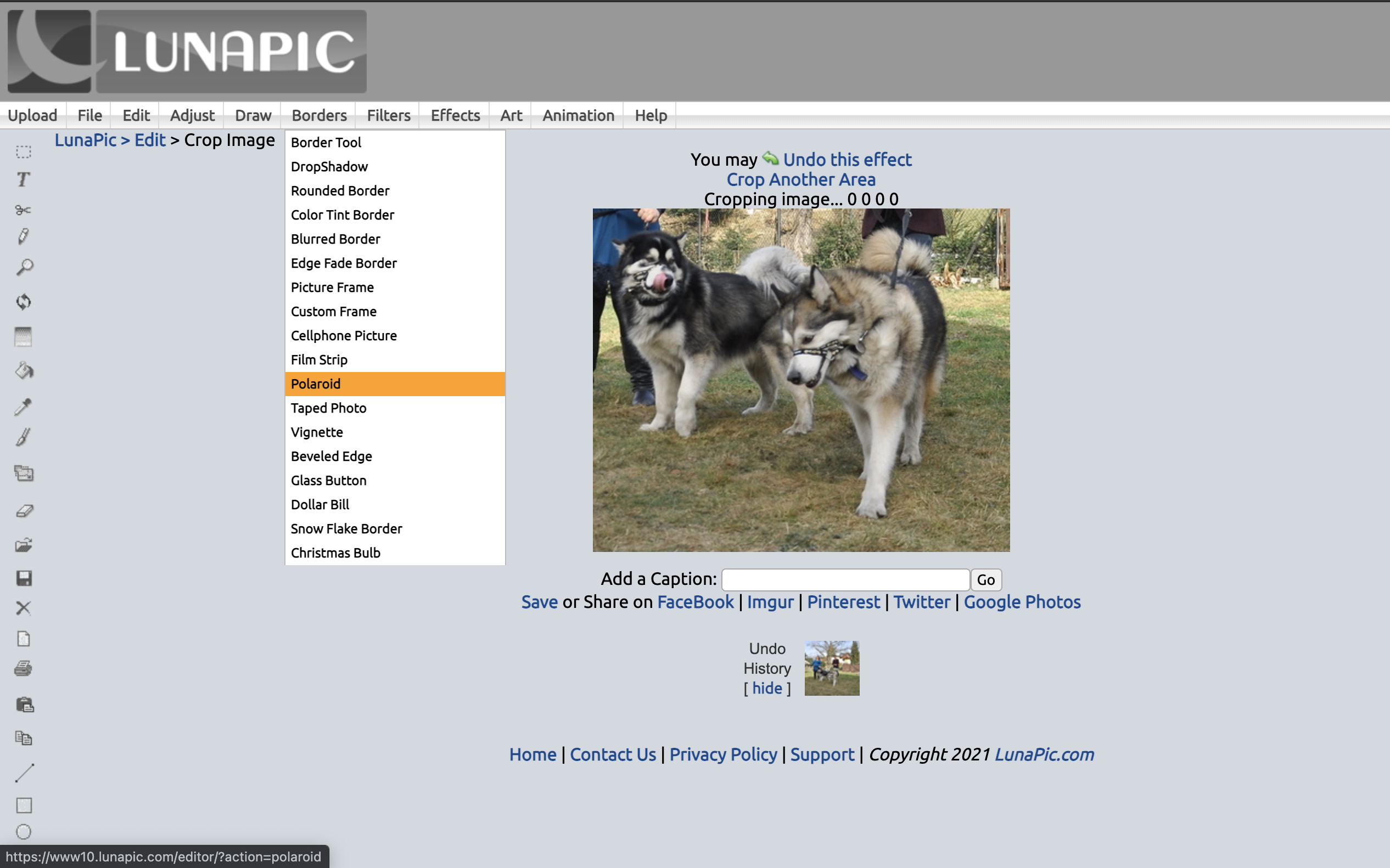
2. Lunapic
Look past Lunapic's slightly unimpressive interface, and you'll be pleasantly surprised by this online photo editor. You can upload an image you would like to work with, provide the URL of one that's already online, or pull in content from Facebook or various other social platforms.
The slightly unusual interface mixes a semi-traditional set of image editing tools in a toolbar to the left of the screen, a series of menu options across the top, and links and buttons to tools you might want to access quickly. You can work with gradients, apply a good range of quality filters, add stylized effects, and even create simple animations.
To help get you started, there are a range of tutorial available via the Help menu. These serve as a great introduction to some of the theories of image editing for newcomers to the field, but also give specific advice about how to achieve various results in Lunapic.
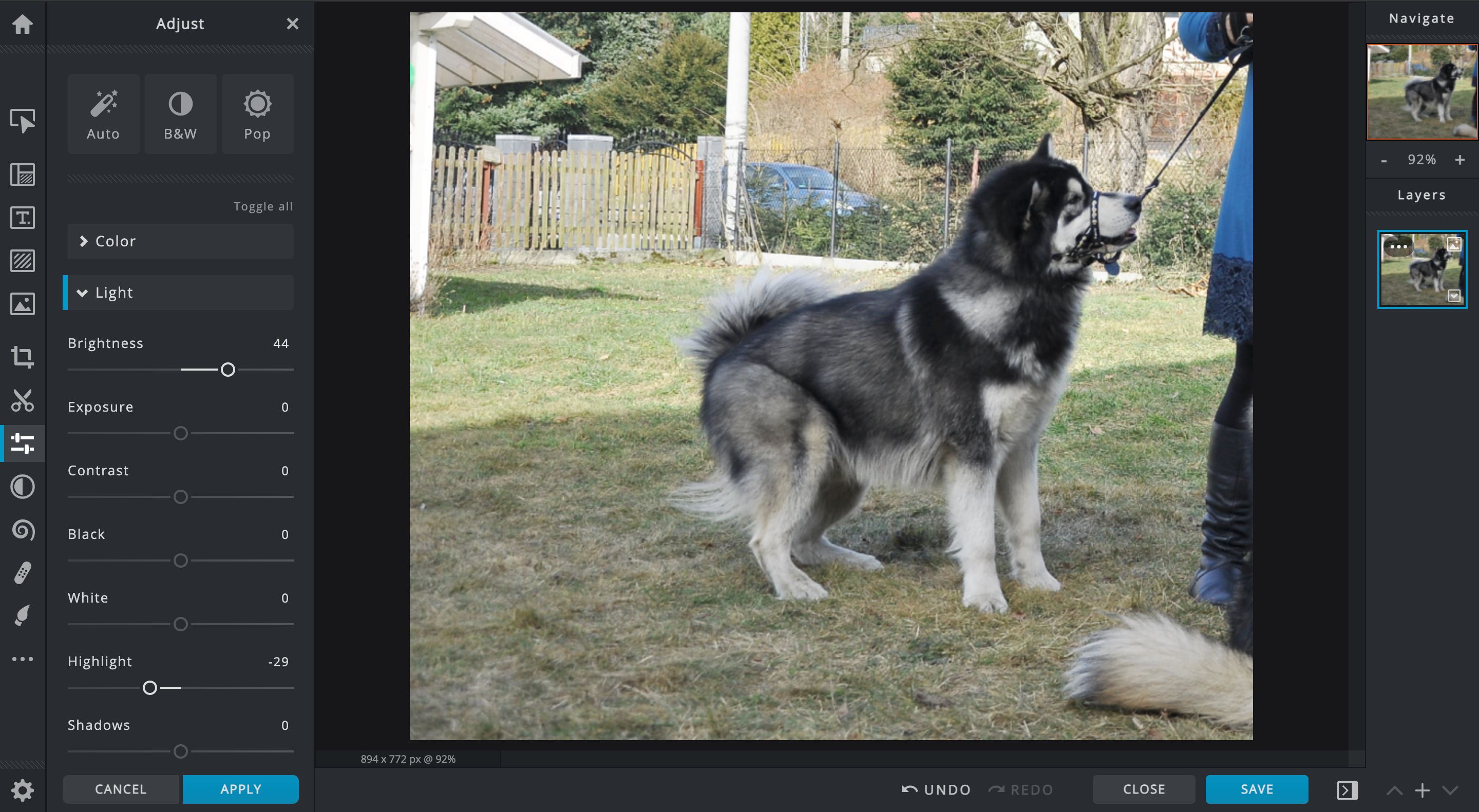
3. Pixlr X
Pixlr X looks like a modern desktop photo editor, and has a range of tools that put many installable apps to shame. As you would expect, you can upload images to work with, or provide the URL of an online image to edit instead.
This done, a vertical toolbar to the left of the page gives access to familiar editing tools broken down into a number of sections – Arrange & Style, Text, Layout, Adjust & Filter, and so on. Within each of these sections is a new sub-toolbar filled with the associated tools and options. Some, such as simple effects, can be applied by just clicking a preview thumbnail, while others allow for greater customization through the manipulation of sliders and settings.
Using Pixlr X, it's possible to get very quick results if that's what you're looking for, and there is the ever-useful healing brush on hand to tidy up images and clear up blemishes in an instant. However, it's also possible to get quite hands-on and spend time editing things to perfection, taking full advantage of layers to create stunning results.
Newcomers may find the toolbars and buttons are a little difficult to interpret to start with, but once you have mastered this, the learning curve is pretty gentle.
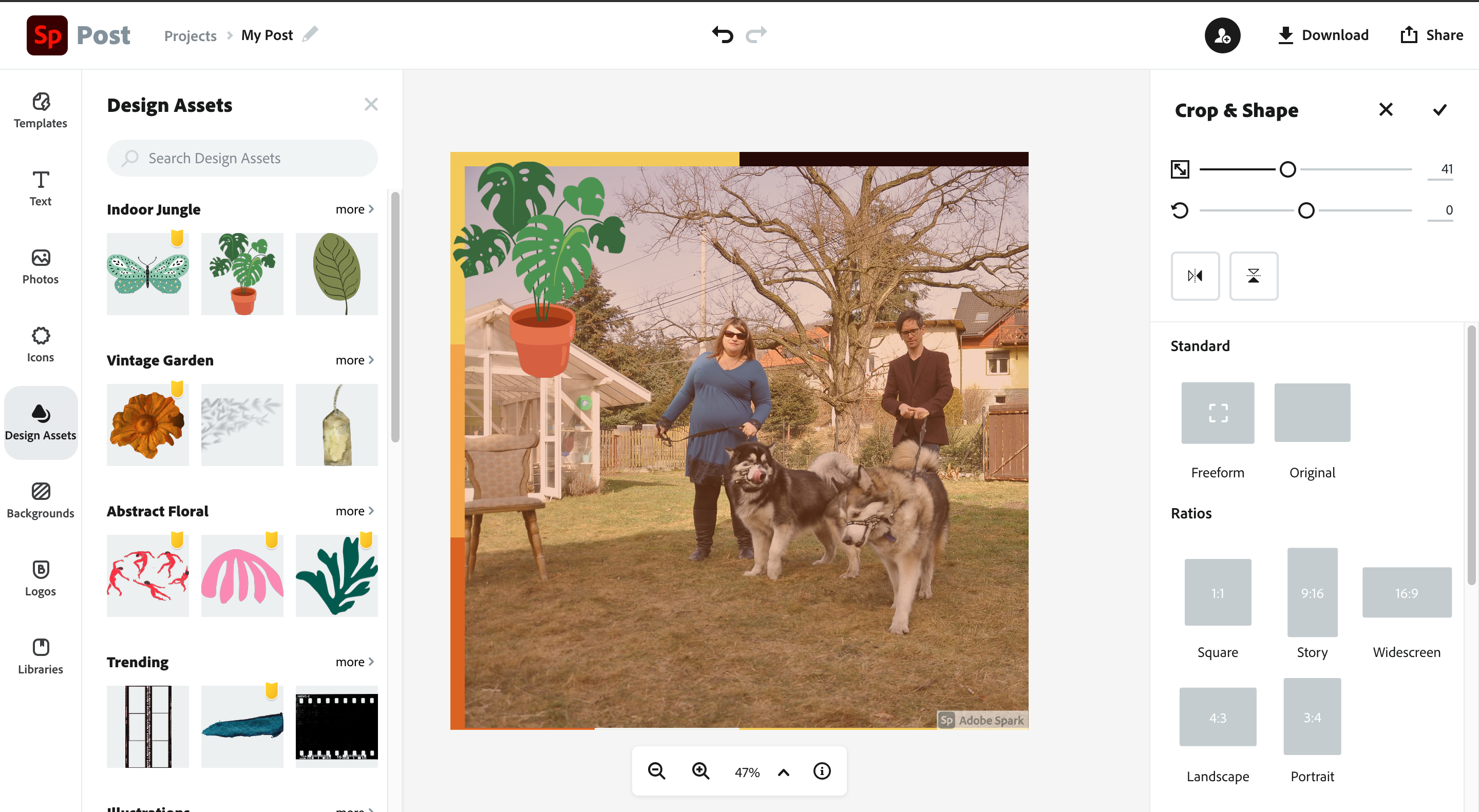
4. Adobe Spark
Spark is an online photo editor from Adobe, but it's nothing like Photoshop. It's capable of producing some impressive results when it comes to getting creative with your photos in projects such as producing business cards, posters and the like, but if you're looking for an actual Photoshop replacement, this is not it.
That said, it is certainly not to be dismissed – Adobe Spark has many potential applications, and lots of templates for you to work with to help you to get started. There are some image editing options available, but they are somewhat more limited than in other sites we've looked at that are perhaps better suited to anyone looking for a more traditional image editor. What Adobe Spark manages to do is to blend the worlds of image editing and desktop publishing, and create a hybrid mashup that is great for creating a range of content for both on- and offline use.
A free account gives you a great opportunity to try out the service, but in reality you will probably want to upgrade to a paid-for account if you decide this is the tool for you; you can pay on a monthly basis (about $15 / £10 / AU$20 per month) or annually (about $150 / £100 / AU$ 200 per year).
The advantage of switching from the free version is that not only do you get to drop the Adobe Spark watermark from your projects, but also that you gain access to additional templates, as well as the fact that you can customize template to an even greater extent.
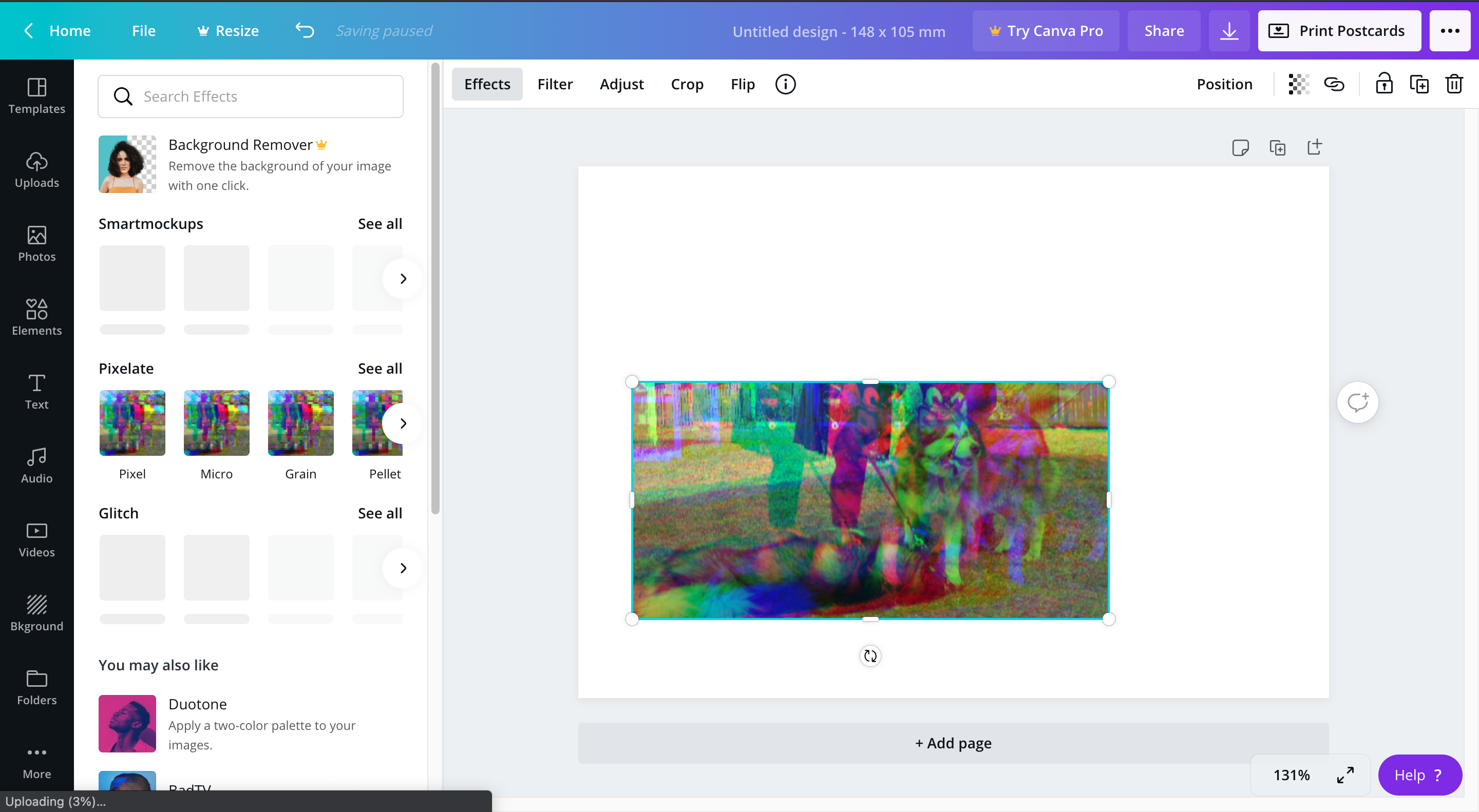
5. Canva
Canva is one of the most popular online photo editors around, and it doesn't take long to see why. Like Adobe Spark, this is a tool that lets you transform your digital images for a range of specific purposes – everything from posting to Instagram or creating a presentation, to design a business card or poster.
In this regard, it's not a dedicated photo editor like some of the other options we have looked at here, but it's geared up to enable you to achieve a great deal with your images. There are scores of templates covering a range of different project, and the selection in this area just about makes up for the lack of advanced editing tools. Those that are present are reasonable, but they're slightly hidden from view, which is a little frustrating.
The different approach taken by Spark and Canva makes it difficult to compare directly with traditional photo editing tools, or even the other options featured in this roundup. If you are look to simply edit, enhance, improve or tweak your images, you're probably better off looking elsewhere, but if you have a vision in mind for a project to use your images in, Canva may well be the online photo editor you've been looking for.
Check out our complete guides to the best video editing software and the best free video editing software
Get daily insight, inspiration and deals in your inbox
Sign up for breaking news, reviews, opinion, top tech deals, and more.

Sofia is a tech journalist who's been writing about software, hardware and the web for nearly 25 years – but still looks as youthful as ever! After years writing for magazines, her life moved online and remains fueled by technology, music and nature.
Having written for websites and magazines since 2000, producing a wide range of reviews, guides, tutorials, brochures, newsletters and more, she continues to write for diverse audiences, from computing newbies to advanced users and business clients. Always willing to try something new, she loves sharing new discoveries with others.
Sofia lives and breathes Windows, Android, iOS, macOS and just about anything with a power button, but her particular areas of interest include security, tweaking and privacy. Her other loves include walking, music, her two Malamutes and, of course, her wife and daughter.